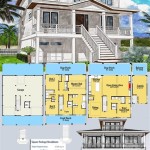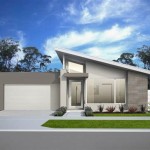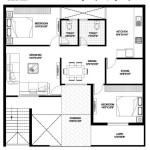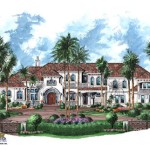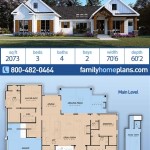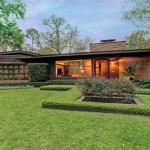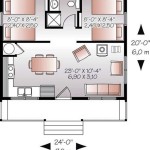Old Southern Style House Plans: A Timeless Architectural Heritage
Old Southern style house plans evoke images of grandeur, hospitality, and a connection to a rich historical past. These designs, often characterized by their distinctive architectural features and emphasis on comfortable living, continue to hold appeal for those seeking a blend of elegance and practicality. Understanding the nuances of these plans requires exploring their historical origins, key characteristics, and the modern adaptations that allow them to thrive in contemporary contexts.The architectural style broadly termed "Old Southern" is not a monolithic entity but rather an amalgamation of influences reflecting the region's diverse cultural heritage. Early colonial structures drew inspiration from European designs, particularly those of England, France, and Spain. As the South developed, these influences blended with local materials and environmental considerations, giving rise to a distinct regional aesthetic. The prevalence of large plantations and the warmer climate profoundly shaped the design and functionality of these homes.
Today, old Southern style house plans represent more than just historical replicas. They embody a lifestyle associated with gracious living, family gatherings, and a slower pace of life. They offer a sense of permanence and stability, connecting homeowners to a legacy of craftsmanship and architectural excellence. Careful consideration must be given to the specific features that define this style to ensure an authentic and functional result.
Key Characteristics of Old Southern Style House Plans
Several defining characteristics distinguish old Southern style house plans from other architectural styles. These elements contribute to the overall aesthetic and functionality of the homes, reflecting the region's history and climate.
Emphasis on Symmetry and Proportions: Symmetry is a hallmark of many old Southern homes, particularly those inspired by Greek Revival and Federal styles. Symmetrical facades, balanced window placement, and centrally positioned entrances create a sense of order and formality. Proportions are equally important, with careful attention paid to the relationship between different architectural elements, such as columns, windows, and rooflines. This emphasis on symmetry contributes to the overall elegance and visual harmony of the homes.
Grand Porches and Verandas: The porch is arguably the most recognizable feature of many old Southern homes. Large, covered porches and verandas extend the living space outdoors, providing shaded areas for relaxation and socializing. These spaces are often adorned with columns, railings, and ornate details, adding to the architectural character of the home. In the past, porches served a practical purpose, providing relief from the heat and humidity. Today, they remain a cherished feature for their aesthetic appeal and the opportunity to enjoy the outdoors.
High Ceilings and Large Windows: High ceilings are another common feature of old Southern homes, contributing to a sense of spaciousness and air circulation. Large windows allow ample natural light to enter the interior, brightening the rooms and providing views of the surrounding landscape. These features were particularly important in the pre-air conditioning era, helping to keep the homes cool and comfortable. The high ceilings also allow for the incorporation of elaborate chandeliers and other decorative elements, enhancing the overall elegance of the interior.
Formal Living Spaces: Old Southern house plans typically include formal living rooms and dining rooms, designed for entertaining guests and hosting special occasions. These spaces are often characterized by their elegant furnishings, decorative molding, and attention to detail. The layout of these rooms often emphasizes a sense of formality and tradition, reflecting the importance of social etiquette in Southern culture. While some modern interpretations may incorporate more open-concept living spaces, the emphasis on formal areas often remains a defining feature.
Use of Traditional Materials: Old Southern homes typically utilize traditional materials such as wood, brick, and stone. Wood is often used for siding, flooring, and trim, while brick is a common choice for foundations and exterior walls. Stone may be incorporated into chimneys, fireplaces, and other architectural elements. The use of these natural materials contributes to the authenticity and timeless appeal of the homes. The specific types of wood, brick, and stone used may vary depending on the specific region and the availability of local resources.
Consideration of Climate: More than just aesthetics, the designs of old Southern houses were often influenced heavily by their position in a hot and humid climate. Wide overhanging eaves were very common in order to protect the outside walls from direct sunlight and prevent water damage. The tall floor-to-ceiling windows also would have been able to be opened to promote airflow and ventilation throughout the house. These climate-conscious features are still present in many modern interpretations of old Southern homes.
Variations and Sub-Styles Within Old Southern Architecture
While the overall "Old Southern" style shares common characteristics, several distinct sub-styles and regional variations exist. Understanding these nuances is crucial for selecting a plan that aligns with personal preferences and reflects the desired aesthetic.
Greek Revival: Influenced by ancient Greek architecture, this style is characterized by its symmetrical facades, prominent columns, and triangular pediments. Greek Revival homes often feature grand entrances and a sense of formality, reflecting the ideals of democracy and classical learning. This style was particularly popular in the antebellum South and remains a symbol of architectural elegance.
Federal Style: This style is another variation that has prominent symmetry and clean lines, however, it is very different from Greek Revival in practice. Federal architecture emphasizes the use of refined details such as intricate mouldings around windows and doors, elaborate fanlights above entrances, and a more intimate scale. These styles of homes were often based on the architecture of England.
French Creole: This style is often found in Louisiana and reflects the influence of French colonial architecture. French Creole homes typically feature raised foundations, large porches, and steeply pitched roofs. The layout often includes a central hallway and multiple rooms opening onto the porch. This style is well-suited to the warm, humid climate of the region.
Antebellum: While not a distinct architectural style in itself, "antebellum" generally refers to Southern homes built during the period before the American Civil War. These homes often incorporate elements of Greek Revival, Federal, and other styles popular at the time. Antebellum homes are often associated with grand plantations and a lifestyle of wealth and privilege.
Lowcountry: Found along the coast of South Carolina and Georgia, the Lowcountry style is characterized by its raised foundations, wide porches, and use of natural materials. These homes are designed to withstand the humid climate and occasional flooding. The architectural designs often reflect the influence of Caribbean and African cultures.
Modern Adaptations of Old Southern House Plans
While traditional old Southern house plans offer a glimpse into the past, modern adaptations allow homeowners to embrace this style while incorporating contemporary features and amenities. These adaptations often involve adjustments to the floor plan, the use of modern materials, and the integration of energy-efficient technologies.
Open-Concept Living Spaces: Many modern adaptations incorporate open-concept living spaces, combining the kitchen, dining area, and living room into one large, integrated area. This design promotes a more casual and interactive lifestyle, while still maintaining the elegance and charm of the old Southern style. The integration of these areas into a common area allows for a greater sense of flow and functionality.
Updated Kitchens and Bathrooms: Modern kitchens and bathrooms are often equipped with high-end appliances, custom cabinetry, and luxurious fixtures. These spaces are designed to be both functional and aesthetically pleasing, reflecting the homeowner's personal style. While these spaces may be more modern in design, they can still incorporate traditional elements, such as farmhouse sinks, clawfoot tubs, and vintage-inspired lighting.
Energy Efficiency and Sustainability: Modern old Southern house plans often prioritize energy efficiency and sustainability. This is usually accomplished through the use of high-performance windows, insulation, and HVAC systems. Solar panels, rainwater harvesting systems, and other sustainable technologies can be incorporated to reduce the home's environmental footprint. These features help to make the homes more comfortable and cost-effective to operate.
Smaller Footprints and Simplified Designs: While some old Southern homes were grand and sprawling, modern adaptations often feature smaller footprints and simplified designs. This reflects a growing trend towards more sustainable and manageable living spaces. These smaller homes can still capture the essence of the old Southern style, while being more practical for today's lifestyles.
Integration of Modern Technology: Modern adaptations often incorporate smart home technology, allowing homeowners to control lighting, temperature, and security systems with ease. These technologies can enhance the comfort, convenience, and security of the home. The smart technologies can be integrated seamlessly into the home's design, without compromising its traditional aesthetic.
In conclusion, old Southern style house plans continue to captivate and inspire, offering a blend of timeless elegance and practical functionality. By understanding the key characteristics, variations, and modern adaptations of this architectural style, homeowners can create homes that honor the past while embracing the future.

This Classic Cottage Is Our New Favorite House Plan Southern Plans Living

House Plan 73602 Southern Style With 1867 Sq Ft 3 Bed 2 Bath

5 Bedrm 7433 Sq Ft Southern Plantation House Plan 153 1187

Pin On Houses

Plan 73733 Southern Style With 4 Bed Bath

5 Bedrm 7433 Sq Ft Southern Plantation House Plan 153 1187

House Plan 73702 Southern Style With 3653 Sq Ft 5 Bed 4 Bath

Plan No 3031 From Southern Pine Homes House Plans With S Vintage 1920s

House Plan 86114 Southern Style With 2568 Sq Ft 3 Bed Bath

Farmhouse Style Annual 2024 Coastal Living House Plans

